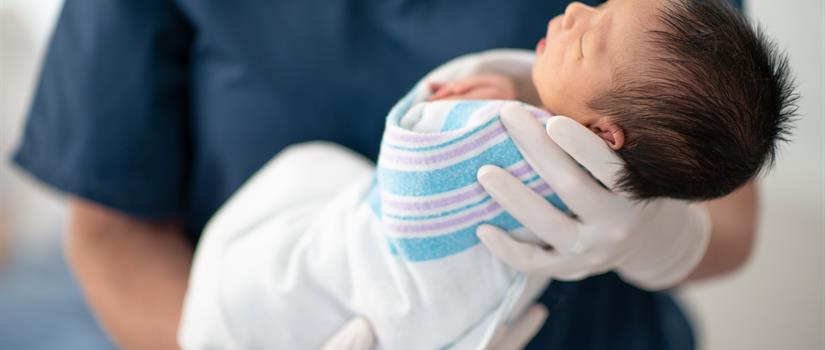
What Happens to My Baby's Blood Spots After the Newborn Screening Test?
Introduction
Newborn screening takes a blood sample from your newborn's heel. It goes on a blood spot collection card to do the screening. Some people want that collection card stored without identifying information with the state because it can help them and families like theirs. Others want to make sure that card is destroyed. the California Newborn Screening (NBS) Program booklet, Important Information for Parents about the Newborn Screening Test, explains what happens to the blood spots after the screening is completed.
|
|
Title: Important Facts About my Baby's Blood Spot Card
Publisher: Genetic Disease Screening Program
Published: 1/18/2019
Duration: 3 minutes
Program: NBS
Language: English |
How are my baby's blood spots stored?
California, like many other states, stores newborn screening blood spot collection cards. The blood spots may be used to improve the screening program or to develop screenings and tests for new disorders.
The blood spots may also be used for studies about diseases in women and children. The stored blood spot cards do not have information, such as names or addresses, that can be used to identify you or your baby. The NBS Program follows all federal and state privacy and research laws.
Can I request the blood spots be destroyed?
Yes. If you do not want your baby's or your own blood spots to be stored, you can request for them to be destroyed. This is your right. You can make this request after newborn screening has been completed. Remember, if you request that the blood spots be destroyed, they will never be available to you or your baby in the future for any additional screening or testing.
To ask NBS to destroy your baby's or your own NBS blood spots:
Benefits of the state storage
The blood spot cards are stored in the state's biobank after the newborn screening. Storing the blood spots provides the following benefits:
- The stored blood spots could provide useful information to you or your family. You and your baby's doctor might want to use the blood spots for special testing that otherwise could not be done. If you or your doctor want to use a child's blood spots for diagnostic purposes, parents need to sign a consent form. This form allows the NBS Program to send the blood spots to a doctor or lab. The consent form is the California Department of Public Health (CDPH) form 4407: Consent for the Release of Dried Blood Specimen (PDF).
- The NBS Program also uses the stored blood spots to develop new screens and tests for disorders it does not currently screen for. Over the last 35 years, newborn screening in California has gone from screening each baby for three disorders to over 80 disorders. This will benefit families like yours when the NBS Program can screen for more disorders and get more children into early treatment.
- The stored blood spots could help researchers fight disease. The NBS Program operates within CDPH. CDPH can approve using leftover blood spots for research. Research is limited to projects that identify, treat, and prevent diseases of women and children. Some of the research includes studies on autism and childhood cancers.
- The NBS Program uses the blood spots to monitor and improve its program.
How is privacy protected?
Safety rules are in place to protect the privacy of babies and families. California state and federal laws have security measures that must be used to protect privacy. The blood spots are never sold or given away. Researchers are charged a fee for limited use of the cards, but do not own them.
Researchers who receive data and blood spots from CDPH are required to meet all federal and state privacy laws. They must sign a "use agreement" that prevents them from using or sharing the blood spots for any purpose. They may only use the blood spots for the approved research project. This includes any products or information that comes from the blood spots. When the project has been completed, any remaining blood must be destroyed. It is illegal for the blood spots to be used for any other purpose.
Program Resources
Forms
Additional information
For more information, contact the California Biobank Program Coordinator at
CaliforniaBiobank@cdph.ca.gov.